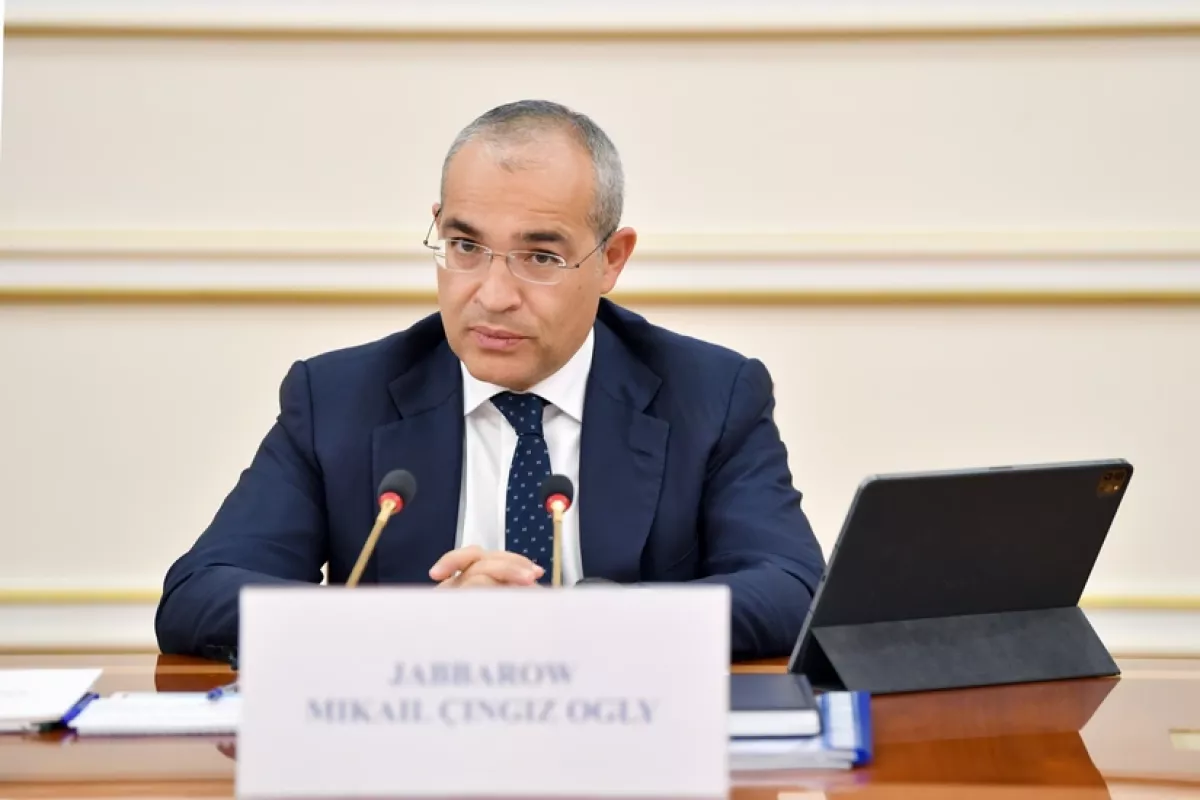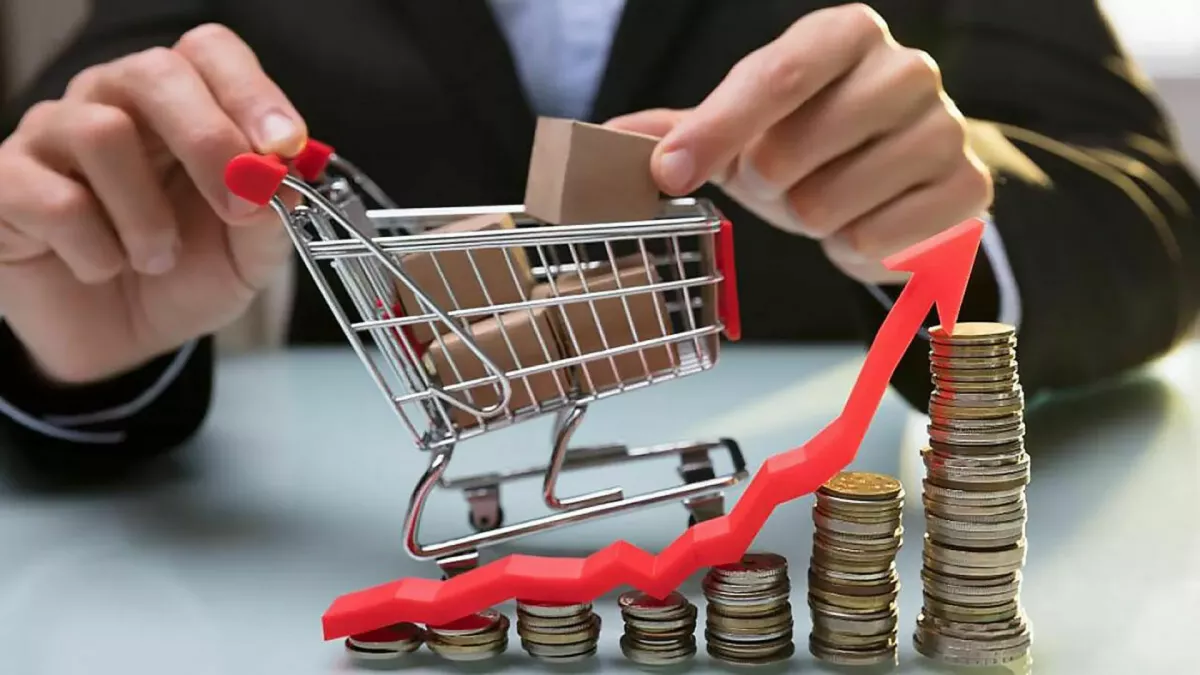Inflation in Azerbaijan: external pressure and domestic stability Caliber.Az review
Since the beginning of 2025, the global economic system has been under pressure from a number of negative factors related to the intensifying trade confrontation between the world’s leading economic centres. In several countries — Azerbaijan’s trading partners — production rates have been declining, macroeconomic indicators have worsened, and risks to monetary stability have increased, all contributing to the rise in consumer prices. As part of the global economy, Azerbaijan is also subject to the impact of imported inflation. Recently, experts from the banking group ING announced an increase in inflation in Azerbaijan. Nevertheless, the Central Bank of Azerbaijan (CBA) and several leading international rating agencies view the coming year as a period of declining price pressure.
In recent years, the global macroeconomic environment has been shaped by a range of factors, including geopolitical tensions and ongoing conflicts, as well as trade wars that have dampened economic growth in key industrial and financial hubs around the world. During the crisis years of 2022 and 2023, regulators in Europe, the United States, and other developed regions focused their efforts on combating the “inflationary fire,” actively tightening monetary policy and raising refinancing rates. As a result, by the end of 2023 and throughout 2024, global price growth for goods and commodities largely slowed down. However, the downside of these processes has been a deepening recession — a slowdown in the pace of global economic growth.
In particular, in its July report “World Economic Outlook”, experts from the International Monetary Fund (IMF) noted that the pace of global economic growth in 2026 will increase by only 0.1 percentage points, reaching 3.1%. Thus, the projected GDP growth rate remains well below the IMF’s long-term average of 3.7%, which is close to the pre-crisis level.
The sluggish dynamics of global GDP are affecting demand and prices for oil and fuel, leading to lower revenues in Azerbaijan’s oil and gas sector, which still accounts for a significant share of the country’s total exports. In this regard, Jihad Azour, Director of the IMF’s Middle East and Central Asia Department, recently stated that Azerbaijan’s GDP growth in the medium term is projected to average 2.5% per year: “In 2025, growth will slow compared to 2024 and reach 3%, as public investment in the hydrocarbon sector gradually declines.”
Nevertheless, thanks to the reforms of recent years, the share of the non-oil sector in Azerbaijan’s gross domestic product has been gradually increasing, becoming the main driver of economic growth.
“Uncertainty in the global economy persists; however, Azerbaijan has demonstrated stable development this year. Taking into account the expected growth rates, the average annual GDP growth for 2022–2025 is projected at 3.3%,” said Azerbaijan’s Minister of Economy, Mikayil Jabbarov, during recent parliamentary discussions on the draft law “On the State Budget for 2026”. “This growth is entirely driven by the development of the non-oil sector, and the average annual GDP growth in the non-resource sphere over the four-year period is expected to reach 6.1%. This figure exceeds the target set in Azerbaijan’s 2022–2026 Socio-Economic Development Strategy.”

As global experience shows, in countries with strong growth in non-oil production, effective import substitution is usually achieved, which indirectly helps to curb the negative effects of imported inflation. One way or another, in the first half of this year, inflationary processes in Azerbaijan accelerated — mainly due to rising prices for goods imported from key trading partners, as well as increases in state-regulated tariffs. The average annual inflation rate rose from 0.7% in the first half of 2024 to 5.9% by the end of June 2025.
The IMF believes that overall, inflation remains under control and within the target range set by the Central Bank of Azerbaijan (CBA). In particular, in its October report titled “Global Economy in Flux, Prospects Remain Dim” the Fund’s experts forecast Azerbaijan’s average annual inflation rate at 5.7% in 2025, expecting it to decline to 4.5% in 2026 and further decrease to 4% by 2030.
Notably, the IMF’s projections are very close to those of Azerbaijan’s Ministry of Economy, which forecasts an average annual inflation rate of 5.4% in 2025, decreasing to 4.8% in 2026 and further to 4.5% in 2027. In this context, the Central Bank of Azerbaijan (CBA), following a more cautious approach, has set the expected inflation rate for the current year at around 6%.
According to the regulator’s estimates, among domestic factors, the main contributors to inflation were the rise in consumption by both the government and households — accounting for 3.35 percentage points (p.p.) — as well as the increase in agricultural product prices, which added another 4.28 p.p. Nevertheless, the CBA also expects that price dynamics will moderate next year, with inflationary expectations projected at around 5.7%.
Thus, speaking recently during the discussions on the draft law “On the State Budget for 2026,” Chairman of the Central Bank of Azerbaijan, Taleh Kazimov, emphasised that the main objective of the regulator’s monetary policy for the coming year will be to keep inflation within the target range.
“In 2026, monetary policy will be implemented within the current framework, and the stability of the exchange rate will also remain a key factor in maintaining price stability,” noted Kazimov. “Fiscal policy is not expected to have a significant impact on inflation, and the Central Bank will continue to work closely with fiscal authorities to ensure effective regulation of aggregate demand.”

It is quite clear that strengthening anti-inflation measures will be a key priority for both the government and the regulator in the coming year. According to the baseline scenario, inflation in 2026 is expected to remain within the target range (4 ± 2%). However, it should not be overlooked that ongoing developments in global trade continue to cause fluctuations in commodity and financial markets. Consequently, the main external risk factor for rising prices remains imported inflation — which accounts for roughly two-thirds of overall inflation growth.
In addition to price increases in partner countries, inflationary pressures are also influenced by the dynamics of the nominal effective exchange rate. According to forecasts, the current account surplus in the balance of payments next year will help maintain balance in the foreign exchange market. It is worth recalling that the currency market in Azerbaijan remains highly stable: unlike many of its trading partners, the manat-to-dollar exchange rate has remained unchanged for eight consecutive years. In particular, during the first half of this year, the supply of foreign currency in the domestic market exceeded demand in both cash and non-cash segments. All these factors, together with the transmission effect of monetary policy, significantly contribute to the resilience of Azerbaijan’s monetary system to external and internal shocks.
Another key objective of anti-inflation policy is to control the impact of government spending and consumer lending on aggregate demand and prices. Rising costs and excessive demand growth represent major domestic risk factors that could accelerate inflationary dynamics. In this regard, it is worth noting that the 2026 state budget has optimised expenditure items across several secondary sectors.

On the other hand, in the medium term, the regulator is expected to pursue a more conservative monetary policy strategy, which may include an increase in the refinancing rate. It should be recalled that on 22 October this year, the Central Bank’s Board decided once again to keep the key interest rate unchanged at 7%. However, according to projections by the Netherlands-based ING Group, the regulator may raise the rate to 7.25% in the fourth quarter of 2025 and maintain this level until the third quarter of 2026. Thereafter, ING experts expect the rate to increase to 7.5% in the third quarter of 2026, to 8% in the fourth, and possibly reach 11% in the first quarter of 2027.
At present, it is difficult to draw firm conclusions regarding ING Group’s projections, which suggest such a sharp increase in the Central Bank’s key interest rate. The inflation forecasts issued by the Netherlands’ largest banking group also raise some doubts. According to the data recently published by ING Group, Azerbaijan’s average annual inflation is expected to reach 5.8% in 2025, 5.9% in 2026, and 8.9% in 2027. These figures not only contradict the projections of the national regulator and the Ministry of Economy but also diverge significantly from the expectations of international donor institutions and rating agencies.
In particular, analysts at the World Bank are far more optimistic, estimating Azerbaijan’s average annual inflation at 2.3% for both 2025 and 2026. The corresponding forecasts from the Asian Development Bank are 4.2% for 2025 and 3.5% for 2026. Meanwhile, rating agencies S&P Global and Moody’s project inflation at around 4% for the current year and 3% for the next, while experts from Fitch Ratings forecast it at 5.3% and 4.6%, respectively.








